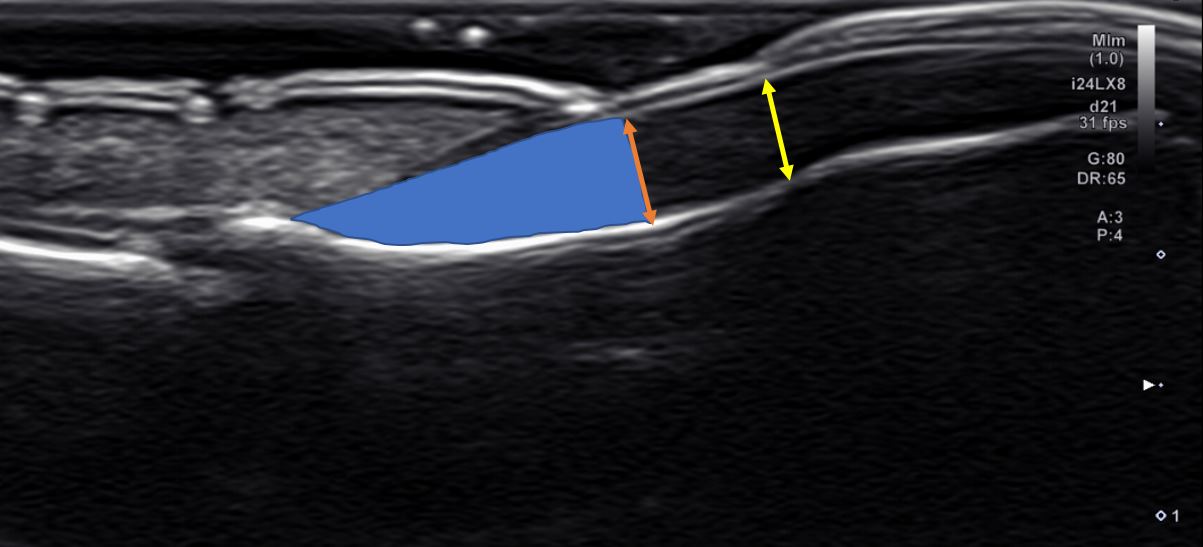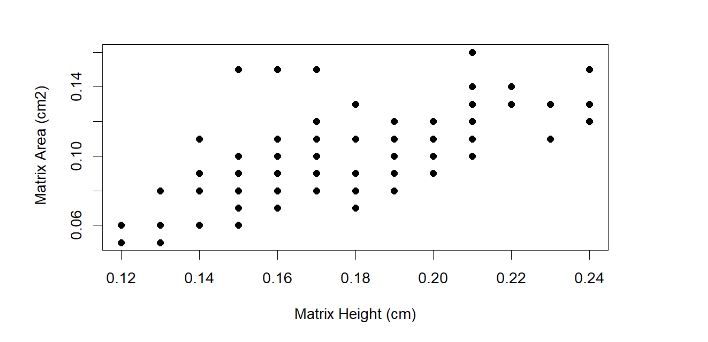Session Information
Date: Saturday, November 16, 2024
Title: Imaging of Rheumatic Diseases Poster I: Inflammatory Arthritis
Session Type: Poster Session A
Session Time: 10:30AM-12:30PM
Background/Purpose: Psoriatic arthritis (PsA) develops in roughly one-third of psoriasis patients. The inflammatory process in PsA is thought to originate in the nail unit and progress proximally towards the distal phalanx, involving the synovioentheseal complex and eventually, the DIP joint. Nail involvement serves as a predictor for PsA development. Imaging modalities like US offer valuable tools for assessing the complex distal phalanx anatomy. However, existing literature on nail US measurements shows inconsistency. This study aimed to identify differences in nail bed thickness, matrix thickness, and nail bed power Doppler signal between psoriasis (PsO) patients and healthy controls. And, evaluate a novel cross-sectional method for nail matrix measurement.
Methods: This is a cross-sectional study (IRB-202301116). Adults with PsO (cutaneous, nail, or PsA) without other rheumatological diseases were included. Participants were excluded if they had a recent trauma of the nails, peripheral neuropathy, peripheral vascular disease, uncontrolled endocrinopathy, pregnancy, or current or recent (3 months) treatment with biological agents. A second-year fellow-in-training performed the clinical and US assessments. Canon Aplio machine using an i24Lx8 probe with operating frequencies between 18 MHz and 24 MHz was used to perform US of 2nd and 3rd fingernails of bilateral hands along with any other affected nail. Matrix and nail bed measurements are shown in Image 1. Power Doppler (PD) signals were graded as grade 0: no PD; grade 1: one/ two vessels; grade 2: PD ≤50% of the nail bed; grade 3: PD covering >50% of the nail bed. Descriptive statistics was performed using R software. Shapiro-Wilk tests assessed normality before t-tests or Wilcox Rank Sum Test.
Results: The study included 13 patients (4 males, 56 total nails, mean age- 47.8 years) and 14 healthy controls (4 males, 52 total nails, mean age- 37.5 years). The average disease duration was 9.2 years. Nine patients had PsA based on CASPER criteria, and three were on conventional DMARDs. The mean PASI score was 3.15. Seven patients had nail psoriasis. Matrix area (mean 0.09 vs. 0.1; p-value 0.64) and matrix height (median 0.19 vs. 0.17; p-value 0.2) were not statistically significant between groups. However, Pearson correlation showed a moderate correlation between matrix area and height (r²: 0.63; p-value < 0.05) [Image 2]. The PD signal was significantly lower in the psoriasis group (median 3 vs 2; IQR 1-2; p-value 0.004).
Conclusion: This study explored the potential of US nail unit assessment in differentiating psoriatic patients from healthy controls. While our novel cross-sectional nail matrix measurement technique showed a moderate correlation between area and height, neither measure differed significantly between the groups. Interestingly, power Doppler signal intensity was significantly lower in the psoriasis group than in healthy controls. This finding suggests that decreased nail bed vascularization may be a marker of psoriatic nail involvement. Further investigation with a larger sample size is warranted to explore alternative nail matrix measurement techniques alongside power Doppler analysis.
To cite this abstract in AMA style:
Kaur I, Par N, Myant T, Kaeley G. Differentiation of Nail Psoriasis from Healthy Nails Using Ultrasound: A Cross-Sectional Study with a Novel Nail Matrix Measurement Technique [abstract]. Arthritis Rheumatol. 2024; 76 (suppl 9). https://acrabstracts.org/abstract/differentiation-of-nail-psoriasis-from-healthy-nails-using-ultrasound-a-cross-sectional-study-with-a-novel-nail-matrix-measurement-technique/. Accessed .« Back to ACR Convergence 2024
ACR Meeting Abstracts - https://acrabstracts.org/abstract/differentiation-of-nail-psoriasis-from-healthy-nails-using-ultrasound-a-cross-sectional-study-with-a-novel-nail-matrix-measurement-technique/


